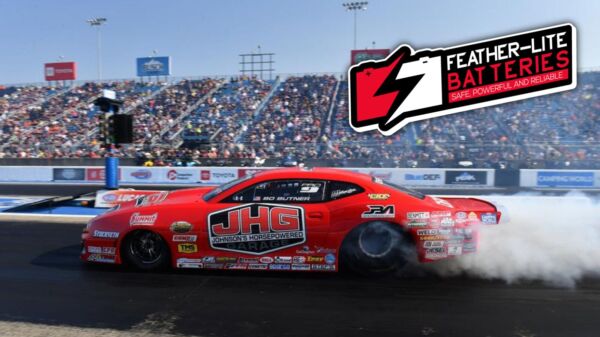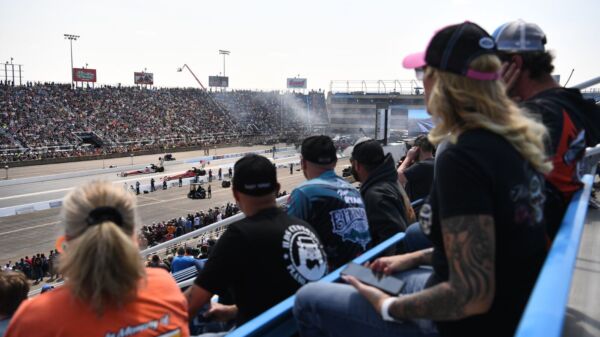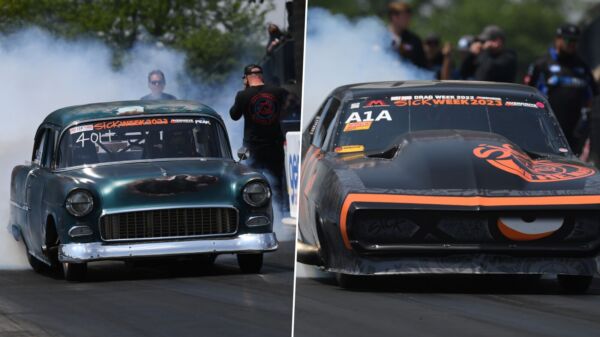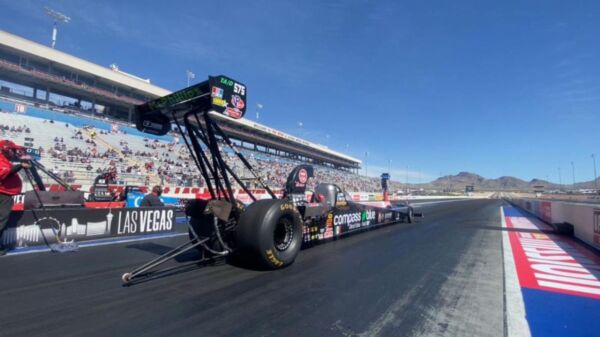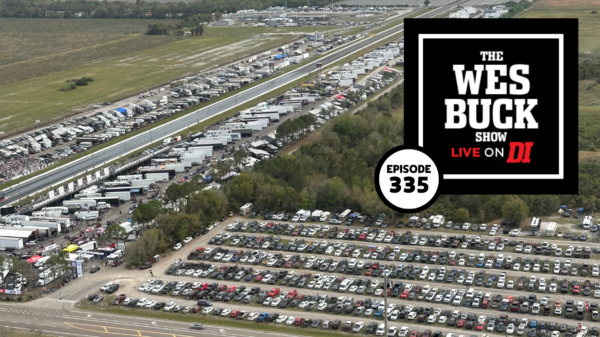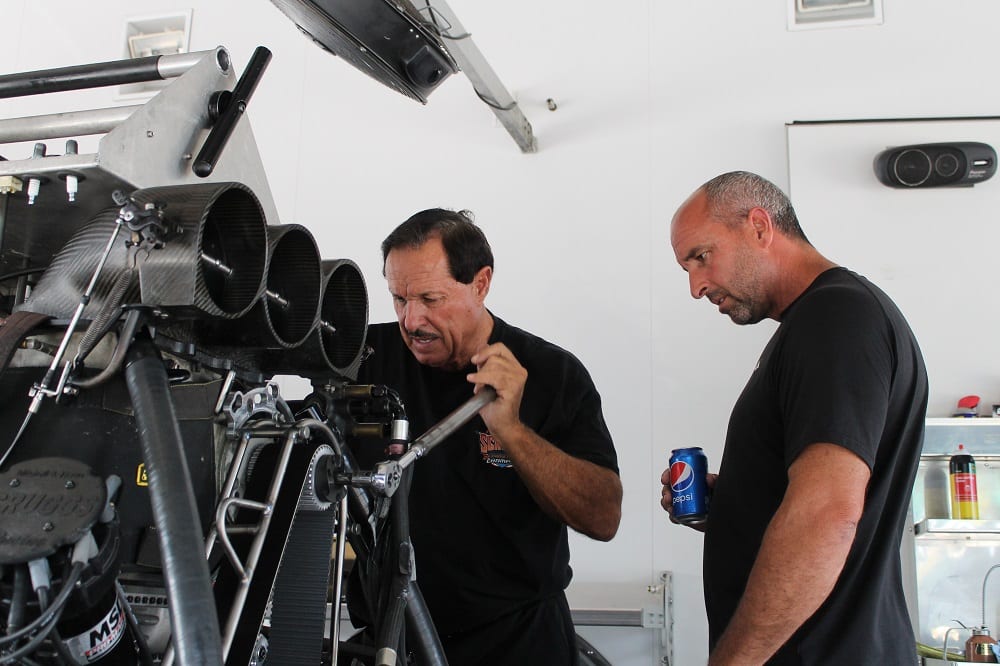Imagine a time when millions of Americans are tuned into a major television network to watch live coverage of the NHRA Mello Yello Drag Racing Series – a sport once relegated to 1AM timeslots and the occasional primetime billing on a sporting network’s secondary channel. Now, think of an eighth-mile drag race in rural Georgia where a standing-room-only crowd numbering in the tens-of-thousands has gathered to witness drivers of radial tire-equipped cars dip well into the three-second zone at over 200mph while competing for a $50,000 winner’s purse. Finally, picture a group of underground street racers from the Midwest as the hottest stars in reality television.
Such notions would be laughed at as recently as the turn of the decade, but they are all just a glimpse at the current  state of drag racing in 2016. The NHRA “Western Swing” and prestigious U.S. Nationals were broadcast live on FOX this summer for the first time in history – a monumental achievement for the sanctioning body under the direction of new president Peter Clifford. Promoter Donald “Duck” Long literally shut down major highways with his Lights Out 7 event at South Georgia Motorsports Park in February, where about 450 on-the-edge, small-tired race cars battled for prize money that was previously unheard of in the drag radial world. Now in production for its eighth season, Discovery’s STREET OUTLAWS show and its stars have created controversy and attracted legions of fans as they undoubtedly leave their mark on the industry. Top Fuel dragsters and Funny Cars are eclipsing speed records that were set when the nitro-gulping machines were still racing to 1,320-feet, and eighth-mile Pro Mods are now capable of performances in the 3.4-second, 230 mile per hour range. It’s truly a captivating and important time for the sport.
state of drag racing in 2016. The NHRA “Western Swing” and prestigious U.S. Nationals were broadcast live on FOX this summer for the first time in history – a monumental achievement for the sanctioning body under the direction of new president Peter Clifford. Promoter Donald “Duck” Long literally shut down major highways with his Lights Out 7 event at South Georgia Motorsports Park in February, where about 450 on-the-edge, small-tired race cars battled for prize money that was previously unheard of in the drag radial world. Now in production for its eighth season, Discovery’s STREET OUTLAWS show and its stars have created controversy and attracted legions of fans as they undoubtedly leave their mark on the industry. Top Fuel dragsters and Funny Cars are eclipsing speed records that were set when the nitro-gulping machines were still racing to 1,320-feet, and eighth-mile Pro Mods are now capable of performances in the 3.4-second, 230 mile per hour range. It’s truly a captivating and important time for the sport.
Through a series of face-to-face interviews, DRAG ILLUSTRATED gathered opinions from five of professional drag racing’s most powerful, prominent and popular figures to get a look at the state of drag racing from the inside. The panelists represent several different backgrounds and disciplines – from Alan Johnson’s reserved stance as an elite Top Fuel crew chief and manufacturer to the driven nature of Leah Pritchett during her ongoing quest to find a major backer. Pro Nitrous superstar driver and owner Steve “Stevie Fast” Jackson tackles the topics with the signature tell-it-like-it-is, no-punches-pulled style of a proven grudge racer. As an original outlaw Pro Mod heavyweight and quiet co-founder-slash-owner of the Professional Drag Racers Association (PDRA), Jason Scruggs comments on the series’ tumultuous season and what they’re doing to improve in the future. Finally, NHRA Funny Car pilot Ron Capps provides insight from his standpoint as one of the sport’s few textbook “professional drag racers”, revealing how his corporate sponsors feel about the future of NHRA drag racing.
Part 1: Alan Johnson
Part 2: Jason Scruggs
While there are always issues facing the sport of drag racing at any given time, here at the midway point of the season a large majority of racers, promoters and fans seem to be in high spirits. Where do you stand on the health and wellness of drag racing heading the heat of summer in 2016?
JASON SCRUGGS: I think things are looking good right now, overall. Without question, the STREET OUTLAWS program is bringing a lot of new people into drag racing, and a lot of people back that may have lost interest over time. It’s also bringing a younger generation, and that’s critical. Over time, I think that’s going to help all of us – from the NHRA to the PDRA to all the other organizations and tracks in drag racing. It’s already contributed to the growth of drag radial racing. Of course, I don’t run NHRA, but I do believe the new management team is a little more open-minded than that of years past, and they’re willing to try new things instead of remaining stagnant like they have been for the last 15- or 20-years. All in all, I think our focus needs to remain on attracting the younger generation because the guys who grew up hot rodding in the ‘60s and ‘70s – they’re dying off. We have to go after this cell phone generation.
The people we’ve assembled for our 2016 State of Drag roundtable all come from different backgrounds and segments of the racing industry, but it’s undeniable that the NHRA is the face of our sport and the organization’s new president, Peter Clifford, has a full year under his belt with considerable praise and admiration. What are your thoughts on Clifford’s first year in office and the future of our sport in his hands?
 JS: Even though I’m a PDRA racer and outlaw racer at heart, obviously, I’m like any hardcore drag racing fan, and I keep up with all the sanctioning bodies. The NHRA side, especially this year, looks to be going in the right direction to me. There are things you could argue with them on, but on average, on the whole, I think they’re doing good – especially this new television program and broadcast partner. Drag racing on live television is very good, and I think the FOX deal is going to really work out for them. In this day and age, I think it’s important to be open-minded, and that seems to be something they’re embracing. Considering some of the car counts, I’m not convinced they don’t need a shot in the arm with a new class or something, but that’s not easy to do. I think we’d all like to see the Pro Mod show over there grow, but it’s one of those things where it’s a challenge – most these guys have a day job. The fans like this type of racing, but you take it to more of a national stage and between driving the cost up and increasing the number of races you’d likely lose a big majority of the guys.
JS: Even though I’m a PDRA racer and outlaw racer at heart, obviously, I’m like any hardcore drag racing fan, and I keep up with all the sanctioning bodies. The NHRA side, especially this year, looks to be going in the right direction to me. There are things you could argue with them on, but on average, on the whole, I think they’re doing good – especially this new television program and broadcast partner. Drag racing on live television is very good, and I think the FOX deal is going to really work out for them. In this day and age, I think it’s important to be open-minded, and that seems to be something they’re embracing. Considering some of the car counts, I’m not convinced they don’t need a shot in the arm with a new class or something, but that’s not easy to do. I think we’d all like to see the Pro Mod show over there grow, but it’s one of those things where it’s a challenge – most these guys have a day job. The fans like this type of racing, but you take it to more of a national stage and between driving the cost up and increasing the number of races you’d likely lose a big majority of the guys.
Spectator attendance – from national events to regional and outlaw events – seems to be on the rise in 2016. For instance, NHRA reported a 20% increase in advance ticket sales for their event in Englishtown, as well as sellouts in Gainesville and Atlanta. Donald Long’s radial shootout in February was quite-literally overcapacity. Do you see the fan attendance trending the right direction?
JS: Donald Long has done a great job with the radial stuff. He keeps it fresh and exciting. He builds rivalries, creates buzz and that’s what great promoters do. In my opinion, Donald is a great promoter. That being said, he has two races a year, and it’s certainly a little easier to promote two races a year versus 10 or 24. It’s a little bit different deal.
Where do you think drag racing stands, currently, as a marketing platform for corporate America? Be it individual team sponsorship, event sponsorship or series involvement – do you think the value or return on investment as a drag racing sponsor is increasing?
JS: I’ve always believed drag racing to be a very good marketing tool – it’s a lot about the loyalty that exists out here and the dedication of the fans. With NHRA right now and their new relationship with FOX, I think there’s more visibility than ever. On the PDRA side, and with a lot of series, I think there’s just a lot of opportunity for creative thinking and trying things. I know that I can speak on behalf of PDRA and say that we’re open to ideas and we’re always willing to work with sponsors to try things and go the extra mile to create the value they’re looking for in a marketing program. With the way social media has taken off and the exposure that is possible by way of the internet, we’ve really embraced our live feed and are thrilled with the number of viewers and reach we’re able to generate online. People aren’t getting any less attached to their smart phones or tablets, and I’m glad that PDRA events are so readily accessible with those devices.

Amongst the many debatable topics in 2016, track prep – abundance of, lack of, or consistency of – has been largely at the forefront. Where do you stand on the preparation of drag strips in 2016? Have we reached a fair consistency on the NHRA level? Has class-specific prep become an issue? Do you have an opinion on the growing popularity of no-prep racing?
JS: The no-prep scene seems to be hot, especially out west in Texas and Oklahoma, but truthfully I think it’s kind of silly. First of all, once you get a hundred cars out there doing burnouts in glue and dragging it down the track – it’s not at all no-prep. I don’t really see what people get out of it, but it is what it is. I know some guys who have run some no-prep stuff and they’ve been as fast as 3.80s on those tracks, so I don’t believe it’s much different than an outlaw Pro Mod race. It’s popular, though, and to each their own, I guess.
At this point in 2016 we have 330-plus MPH nitro cars on the 1,000-foot, 5.7-second, 260mph Pro Mods, 3.4-second, 220mph Outlaw Pro Mods and 210mph eighth-mile street cars. Generally speaking, what is your opinion on the incredible performance of today’s top race cars? Natural evolution of the sport? Out of control? Good? Bad?
JS: It’s drag racing. Honestly, that’s why PDRA believes so strongly in eighth-mile racing – because of the safety 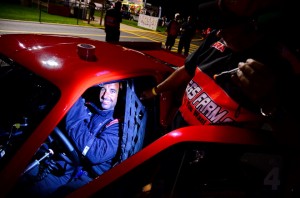 element. If we can go 240 or 250mph in the eighth-mile one of these days, well, I think we need to do it. That’s what it’s all about. It’s racing for a reason. NHRA has brought the fuel cars back to 1,000-feet and, yes, they’re still running 330mph like they did in the quarter-mile, but they have much more room to stop. As long as the tracks are safe, I don’t see a problem. Truthfully, I think the cars need to go fast – as fast as they can possibly go. I’m a racer, but that’s what the sport was built on. You can’t go backwards.
element. If we can go 240 or 250mph in the eighth-mile one of these days, well, I think we need to do it. That’s what it’s all about. It’s racing for a reason. NHRA has brought the fuel cars back to 1,000-feet and, yes, they’re still running 330mph like they did in the quarter-mile, but they have much more room to stop. As long as the tracks are safe, I don’t see a problem. Truthfully, I think the cars need to go fast – as fast as they can possibly go. I’m a racer, but that’s what the sport was built on. You can’t go backwards.
Where do you stand on the level of safety in drag racing in 2016? The sport has, obviously, come a tremendous way since the early days. Where would you like to see improvements or increased focus as we move forward?
JS: You can learn from every incident that happens. We had a tragedy this year with the PDRA. I don’t think anybody ought to be standing close to the guardrail past pretty close to the starting line. There’s just little things like that. Some tracks are just safer than other tracks. Strange things can happen sometimes. For the most part, we just have to learn and I think we’ve done that. On the NHRA side, John Force and those guys, the Schumachers of the world, they’ve figured out ways to make those cars a lot safer the last five- or 10-years since Eric Medlen’s death and Scott Kalitta’s death. They went to 1,000-foot racing, which has helped some with tires and shutdown areas. All that is key.
As doorslammer racing goes, we just gotta learn from our mistakes, too. There’s a few of these cars where we really need to concentrate on the head area. Make sure you have really good padding, which we do, and pour-in seats. Make sure you have enough head room. A few things like that we need to look at. Some guys buy cars that don’t fit them as well as they should because they’re a little bit bigger driver than the car was built for. Little things like that is what we need to look at going forward. But for the most part it’s a very safe sport. I feel safer driving a Pro Extreme car than I do out on the highway with some of these guys.

A significant storyline in recent years has been the popularity of Discovery Channel’s reality television show STREET OUTLAWS, which is in production for its 8th season. The drag racing community is clearly torn as to the show’s impact on drag racing – be it positive or negative – but the show’s tremendous viewership (three-million-plus weekly) is undeniable. Where do you stand on the matter?
JS: In my opinion, the STREET OUTLAWS are pretty good for the sport. Now, it has a little negativity with the romanticizing of illegal street racing, but if it brings in a new generation of gear heads and race fans, well, so be it. Street racing is what brought people to NHRA in the first place – maybe it’s happening again. So long as they continue to let people know that these televised races are done on closed roads with safety equipment, I think it’s great.
Photographs by Ian Tocher
This story originally appeared in Drag Illustrated Issue No. 111, the State of Drag Issue, in June of 2016.
This story was originally published on December 26, 2016. 


